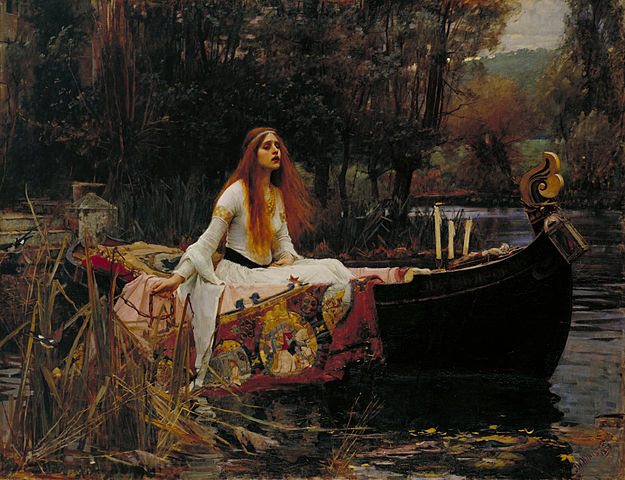

This ambiguity regarding the scope of the Lady’s personal agency contributes to the difficulty of supporting any one particular thematic interpretation over another. What is unknown is whether the effects of the curse are isolated to the destruction of the Lady’s web and mirror, with her subsequent reaction being completely of her own choosing or whether the destruction of the web and mirror is simply the first stage in the onset of the curse, which will continue to control or influence the Lady until her death. Her weaving is destroyed, possibly thrown from the tower, and the mirror she has used to watch the world cracks through the middle she implicitly attributes these events to the onset of her curse. She sees the water lilies, Lancelot (as signified by his helmet), and finally Camelot itself.

She then leaves her work, walks across her room, and looks outside.

In this edition, the work is embellished by four Victorian illustrations. Over a century and a half after it was written, men still desire the Lady, and women identify with her. The tale of the mysterious, enigmatic Lady seems to captivate everyones imagination. It is worth noting the specific sequence of events that occur in this section. The Lady of Shalott is one of the best-loved poems in the English language. The broad stream in his banks complaining, 120 His broad clear brow in sunlight glow'd 100 The sun came dazzling through the leaves, 75 Four grey walls, and four grey towers, 15


 0 kommentar(er)
0 kommentar(er)
